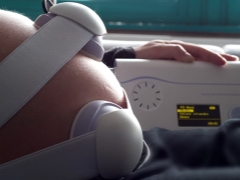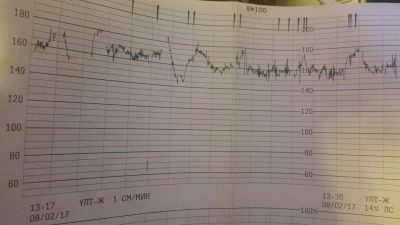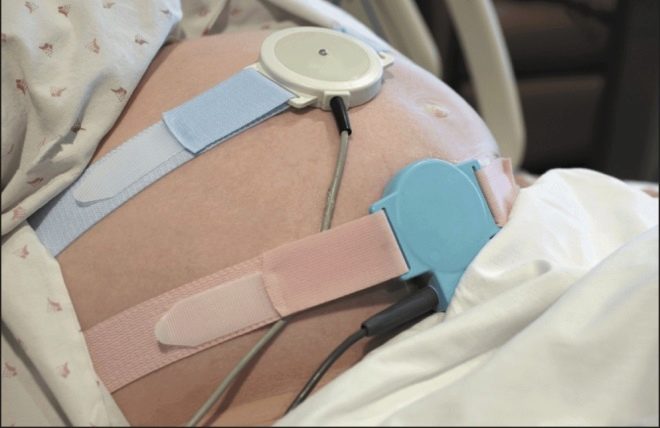When do CTG during pregnancy?
Pregnancy is an unforgettable time for a woman. In this beautiful and difficult period, the expectant mother experiences a lot of different emotions and experiences, including the fear for the health of her baby.
During pregnancy, a woman has to undergo a lot of examinations, the purpose of which is to provide the most complete information about the condition of the fetus. One of such studies is cardiotocography (CTG). This is a fairly informative method for assessing the state of the baby's heart activity. What is CTG and what are the indications for it? At what period of pregnancy is it most appropriate to begin this study? We will understand everything in order.
The essence of the method
Based on historical experience, we can safely say that the cardiovascular system of a child in the womb, since ancient times has been the subject of a detailed study of physicians:
- By itself, the registration of fetal heartbeats made it possible to determine exactly whether he is alive or not.
- The study of the main indicators of the heart activity of the child could give to one degree or another a broad idea of the functional abilities of his cardiovascular system.
Already at the beginning of the 19th century, midwives could auscultate the abdomen of a pregnant woman, where her baby’s heartbeat could be heard well. Over the next two hundred years, physicians did not cease to look for more sophisticated methods of examination of the future mother and her child, which would allow to assess the state of his cardiovascular apparatus with the greatest degree of accuracy. One of these rather informative diagnostic methods is cardiotocography, or CTG.
CTG is performed for a pregnant woman primarily for an objective assessment of the functioning of the fetal heart muscle.
In addition, this method of instrumental diagnostics allows you to determine the frequency of contractions of the child's heart, the level of its physical activity, as well as the dynamics of contractions of the uterus.
Usually CTG is performed in combination with doplerometry (a kind of ultrasound, which makes it possible to fix the main indicators of the level of blood flow in the vessels of the fetus, uterus and placenta) and ultrasound. Such an approach makes it possible to get the most complete picture of the state of the child’s cardiovascular system, as well as fix structural or functional impairments of its development at the early stages, which largely determines the outcome of further therapy.
Cardiotocography allows to identify the following pathologies of intrauterine development in a baby:
- hypoxia (lack of oxygen);
- intrauterine infection;
- insufficient or excessive amount of amniotic fluid;
- placental insufficiency (a combination of structural and functional disorders of the development of the fetus or placenta, which can lead to premature birth, the formation of various fetal abnormalities or oxygen starvation);
- developmental disorders of the fetal cardiovascular system;
- placental abnormalities, etc.
This study is carried out using a special apparatus, which consists of a pair of sensors that output the obtained readings to a recording device. The first sensor (ultrasound) records the fetal heart activity, and the other (strain gauge) measures the activity of the uterus and the corresponding reaction to it of the baby.Both of them are attached with special belts to the belly of a woman.
When is CTG performed?
The most optimal period for the first CTG is considered to be 32 weeks of pregnancy, provided that there are no special indications. The Ministry of Health at the legislative level enshrines the right to conduct this study for a pregnant woman already at week 28.
According to special indications, the attending physician may prescribe CTG before the official deadline, however, in such a case, the study will register only the heartbeat of the child. It will not be possible to determine its reaction to the contractile activity of the uterus, as well as changes in the performance of the heart muscle depending on the change in the position of the fetus at a given gestational age. This is due to the fact that before the 28th week of pregnancy there is no firmly established functional connection between the heart and the autonomic nervous system of the fetus.
For each gestational age there are specific diagnostic indicators of the norm, indicating the normal development of the cardiovascular system of the fetus.
Any deviations from the accepted criteria, depending on the specific situation, may be regarded by the attending physician as evidence of the presence of intrauterine developmental pathology.
Cardiotocography is not considered the main type of instrumental study of the health of the fetus, which can largely determine the tactics of pregnancy, therefore, in the absence of special indications, CTG is performed no more than twice during the entire third trimester.
There are a number of pathologies of pregnancy and related complications, in the presence of which more frequent CTG is indicated. These include:
- postponed pregnancy - this study is carried out once every 4 days after the expected period of birth;
- excessive amount of amniotic fluid, established heart disease, fetoplacental insufficiency, the presence of thyrotoxicosis in the pregnant woman (excessive production of thyroid hormones) - CTG is carried out at least once a week;
- multiple pregnancy, hypertension, clinically narrow pelvis, infectious lesion of the urogenital system - 3 times a month.
Ultimately, the right to determine the timing and frequency of CTG belongs to the attending physician. It will be based on the characteristics of the course of pregnancy, the history of women, as well as the results of other diagnostic studies.
Holding before the birth
Cardiotocography can be prescribed at the onset of labor.
If the gynecologist has not finally determined the basic tactics of labor, he may resort to this diagnostic procedure, on the basis of the results of which he can choose the algorithm of actions most suitable for a particular situation. In this case, CTG is carried out more often than the statutory deadlines (even daily).
If the doctor decides to manage childbirth in a natural way in the case of a perennial pregnancy, the sequence of his actions during CTG is as follows:
- The study is conducted on the day of planned delivery or after a day.
- The following CTG is done 5 days later if the results of the previous study were satisfactory.
- After the same period of time, CTG is repeated.
If after 41 weeks of pregnancy, labor does not occur, the proposed obstetrician may be reviewed by your obstetrician-gynecologist. He may decide on the stimulation of labor or delivery.
One way or another, to make such a decision the results of cardiotocography have a direct impact, as it is quite informative show the current state of the child.
Normal CTG values
Whatever the results of cardiotocography, they can not be an absolute basis for making a diagnosis. The CTG data is able to display only the current state of the fetus, therefore, to compile a more complete clinical picture, it is necessary to repeat this diagnostic procedure several times.
The CTG data is displayed as a curve, due to which a number of inconsistencies can be identified with the normal values characteristic of a particular gestational age.
When decoding cardiotograms specialists take into account the following parameters:
- Basal rhythm - the average number of heartbeats for a certain period of time.
- Rhythm variability - the average level of deviation from the previous parameter.
- Diseliration - a decrease in the number of heartbeats for a certain time. On cardiotogram look like sharp depressions.
- Acceleration - an increase in heart rate. On cardiotogram have the appearance of teeth.
- Tokogram - shows the level of activity of the uterus.
According to the method of removing indicators, there are several types of CTG:
- Non stress test - registration of data on the heart activity of the child is carried out in the most physiological conditions for him.
- The movement of the fetus - here is the registration of movements of the fetus when the uterine tone changes.
- Oxytocin test - Oxytacin (a substance that stimulates the contractile activity of the uterus) is administered to perform a similar diagnostic manipulation of a pregnant woman, while CTG notes the fetal response to labor.
- Mammar test - contractions of the uterus are caused by stimulating the nipples of a woman. This method is most preferable in comparison with the previous one, as it has a smaller number of risks to the fetus.
- Acoustic test - various sound stimuli are used, and after the apparatus the fetal response is recorded.
CTG Preparation Measures
Like many other instrumental diagnostic methods, cardiotocography requires some preparation.
In order for these studies to be sufficiently informative, it is necessary that the fetus be in an active state. To do this, just before the diagnostic procedure, go to the pool or walk
The easiest way to “stir up” the baby is to tickle the stomach. The main thing in trying to provoke fetal activity is not to overdo it, so as not to cause harm to him or to himself.
The most suitable time for the implementation of this diagnostic manipulation is the period from 9:00 to 14:00 and from 19: 00 to 00: 00.
CTG should not go on an empty stomach or within 1 hour after a meal or the introduction of glucose. Failure to follow these simple rules can lead to a large number of errors on the cardiotocogram, “lubricating” the real idea of the fetus. In this case, most likely, the procedure will have to be carried out anew.
Is it harmful?
Carrying out CTG during pregnancy, regardless of the total number of procedures, does not pose any threat to the condition of the woman and her baby. This diagnostic manipulation does not have any contraindications to conduct. Therefore, the fears of some future mothers, associated with a possible threat from CTG, are absolutely groundless.
It is important for every pregnant woman to remember that this type of research is sufficiently informative, and in certain situations it is absolutely necessary. Therefore, one should not go on about their own unreasonable fears and prejudices that are not based on anything. Use common sense and advice from your doctor.
A complete clinical picture of the health of the baby is compiled on the basis of a set of instrumental diagnostic measures, where CTG is one of them.
How to make cardiotocography (CTG), see the following video.
























